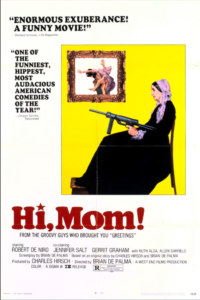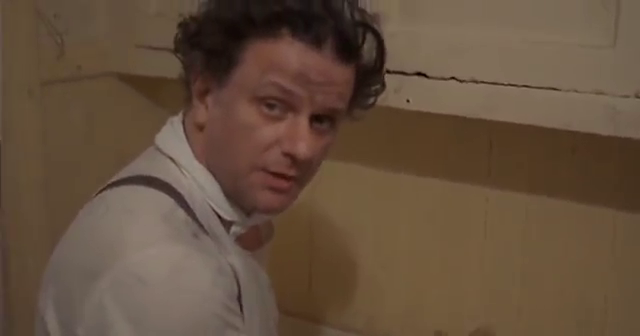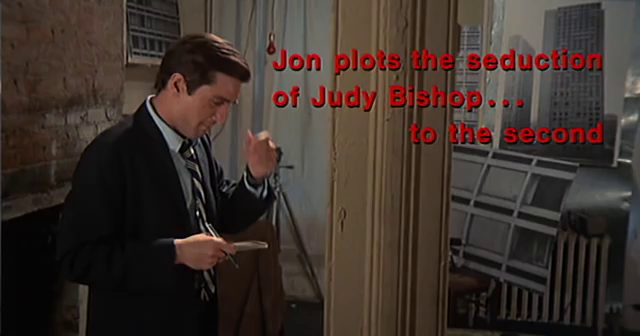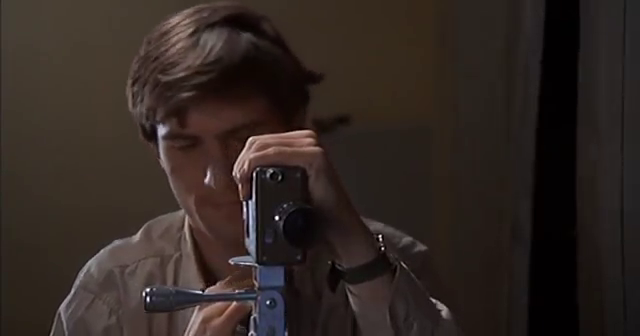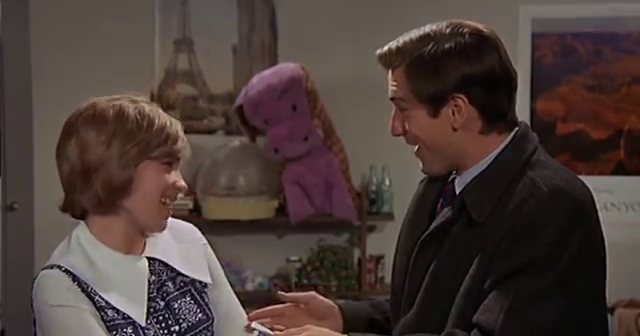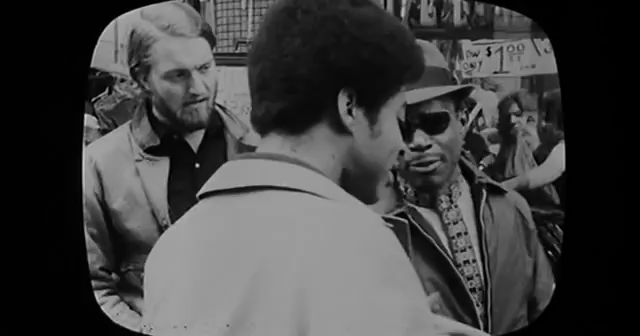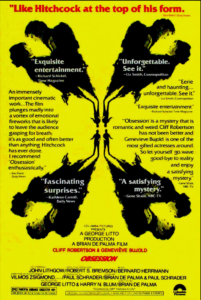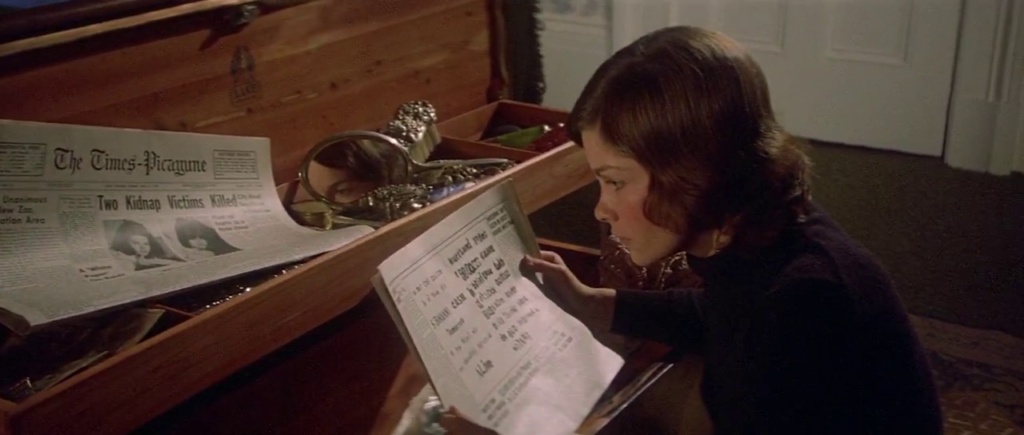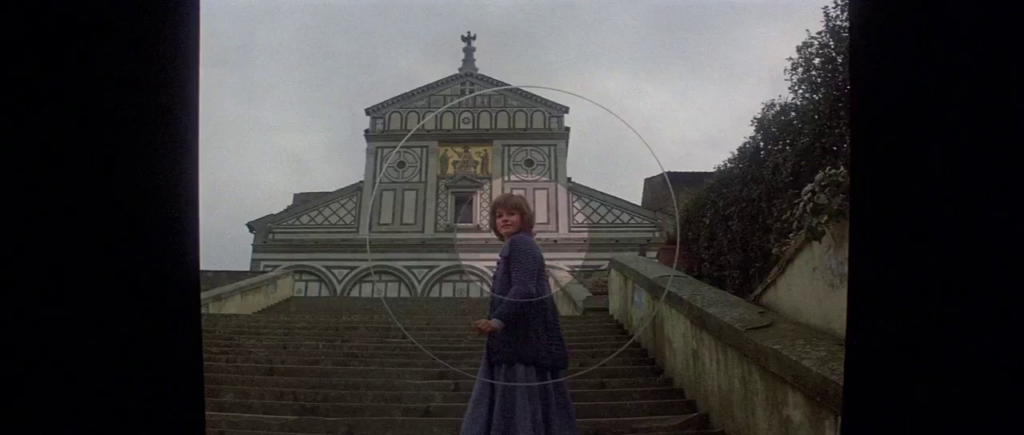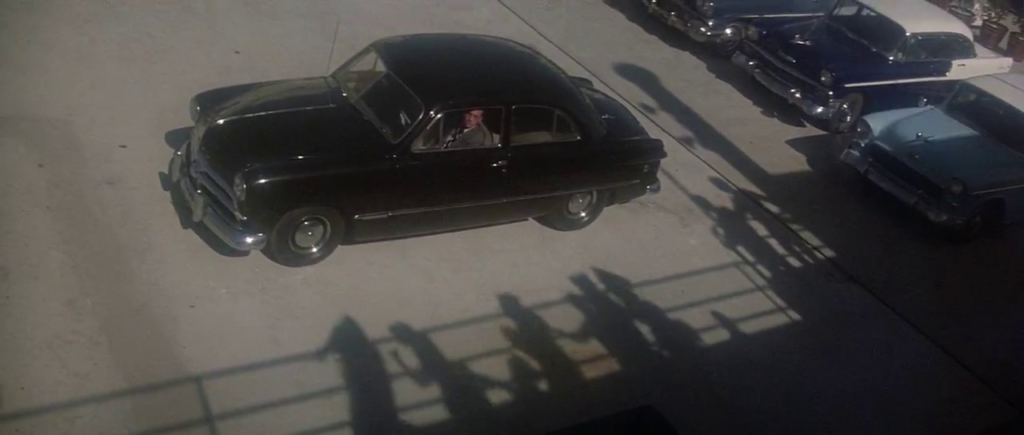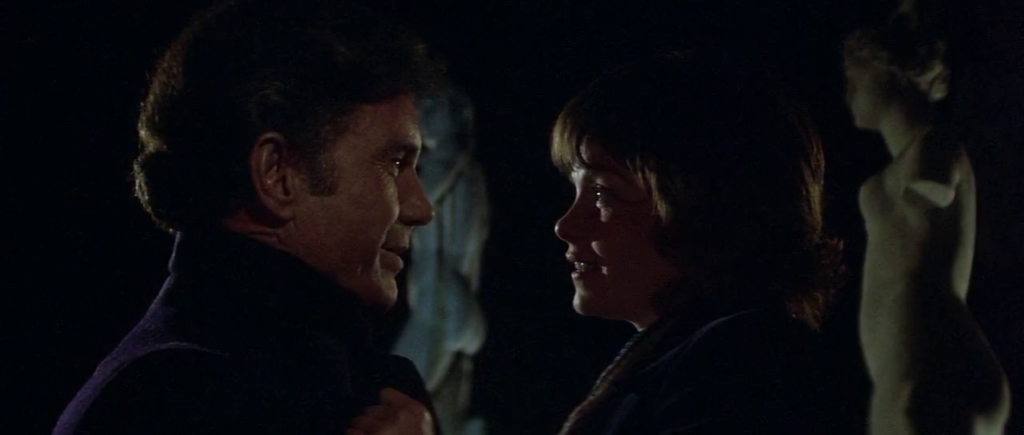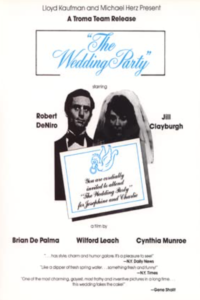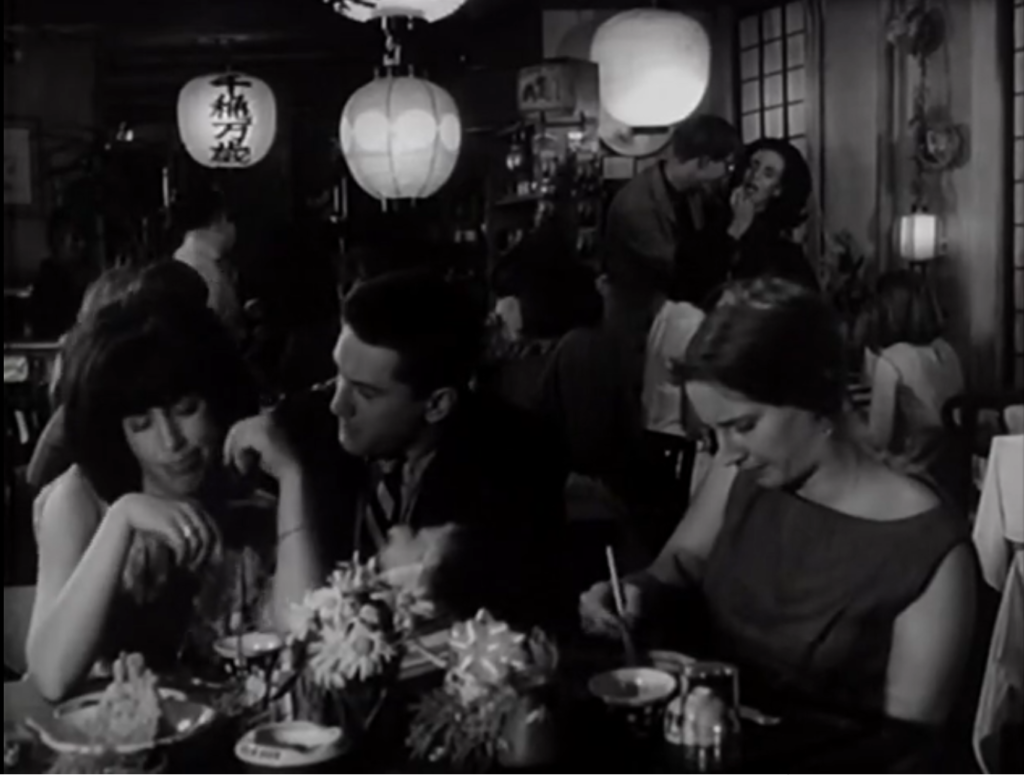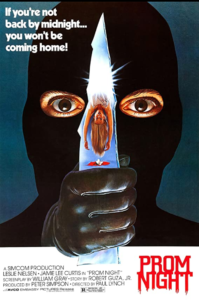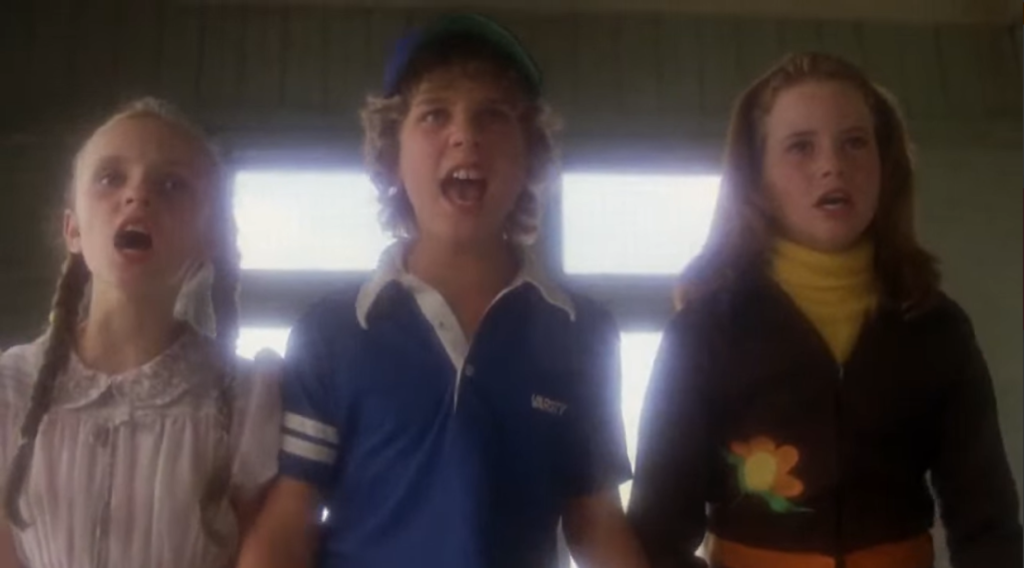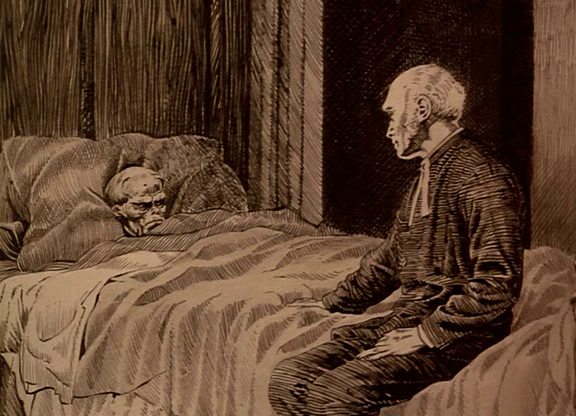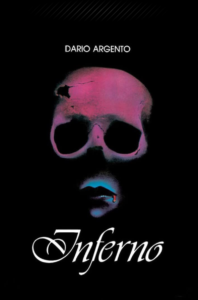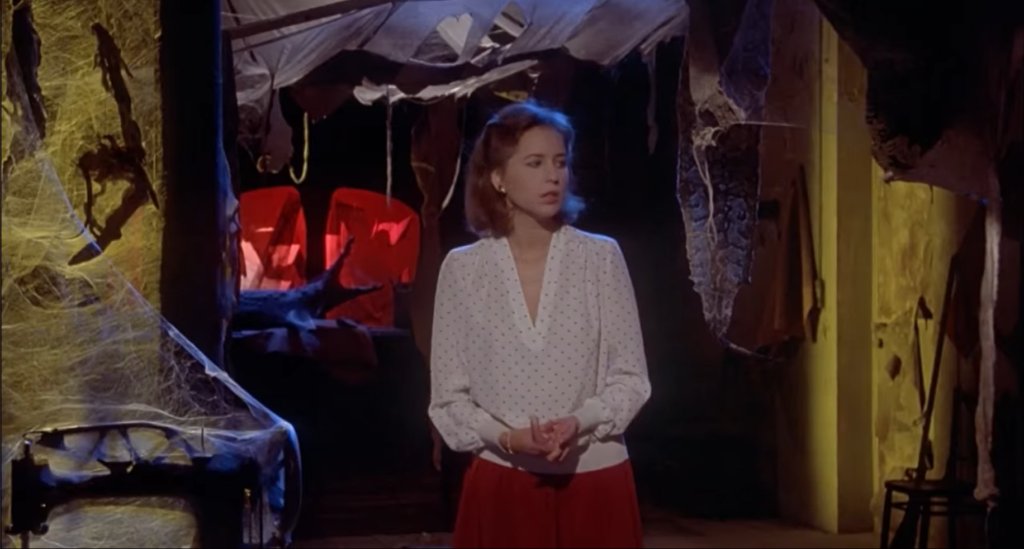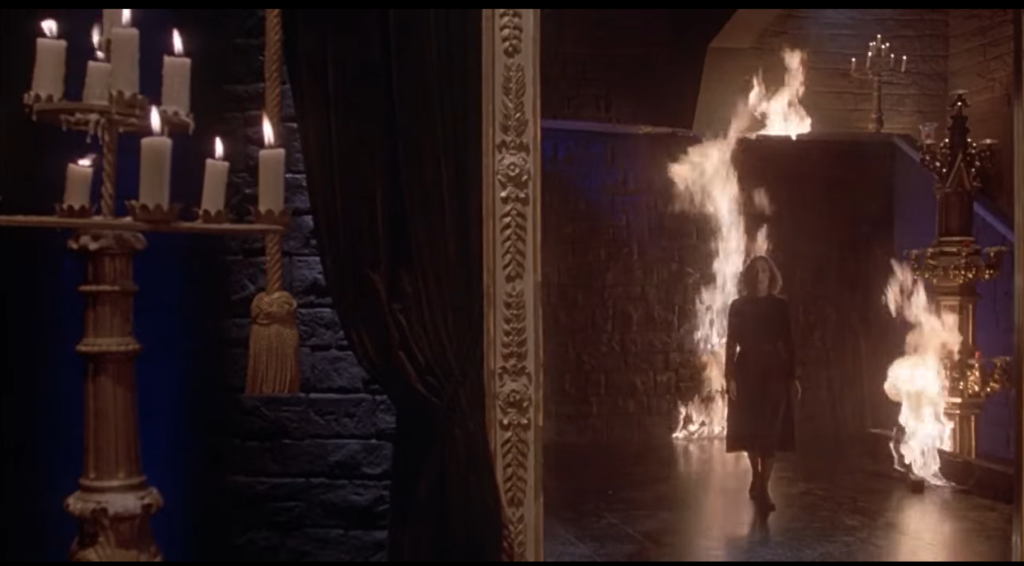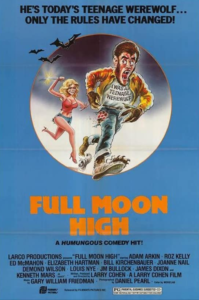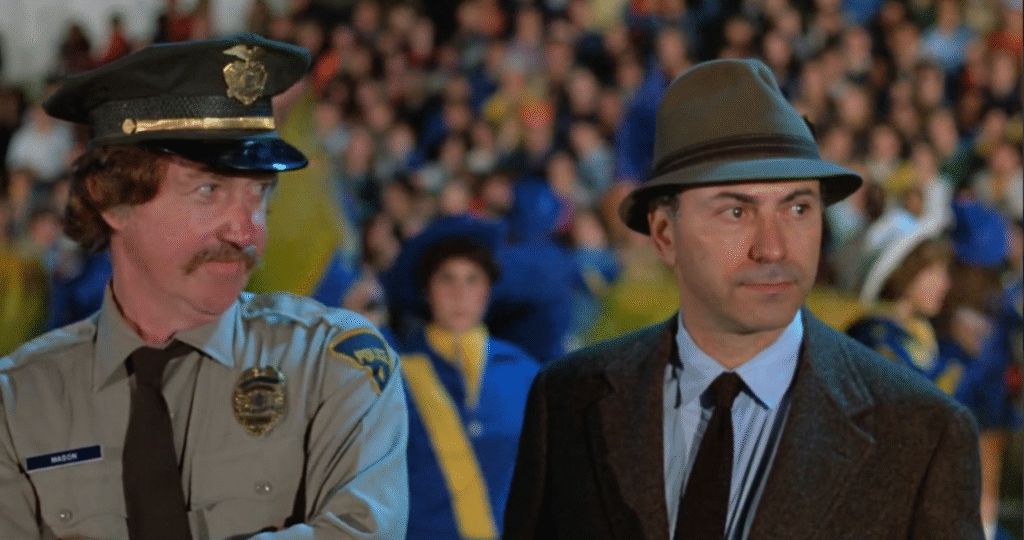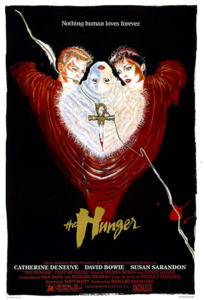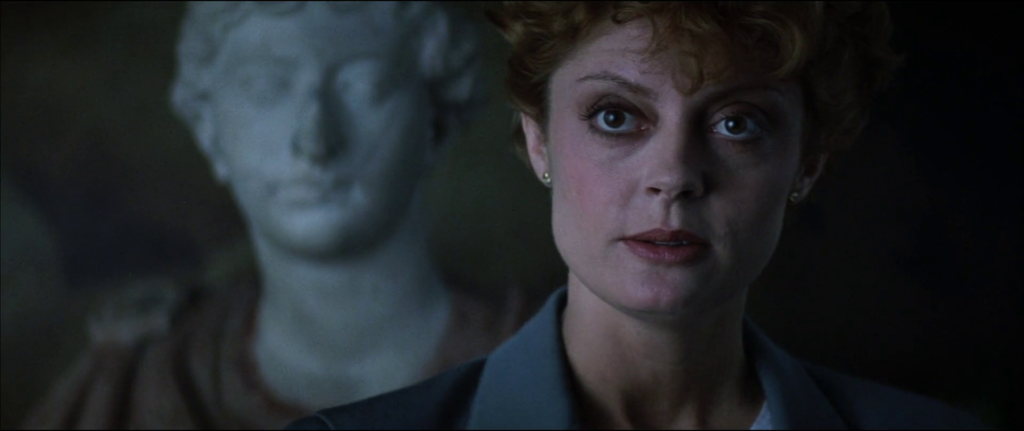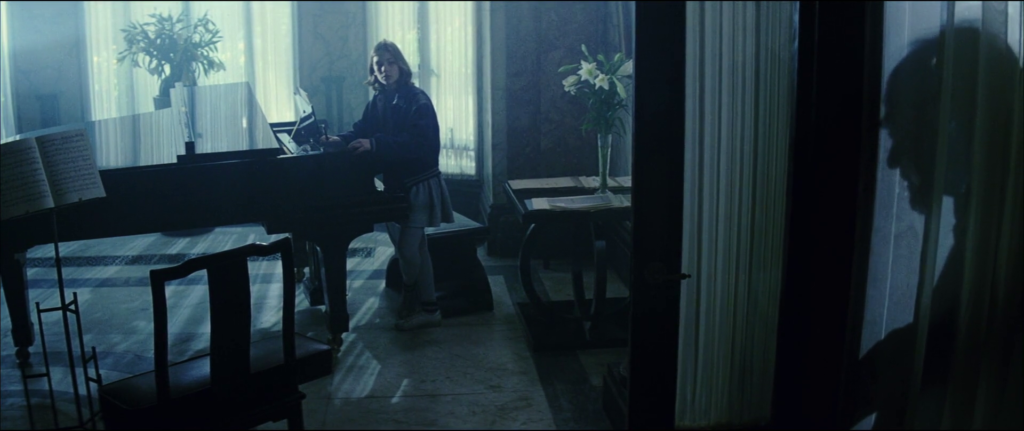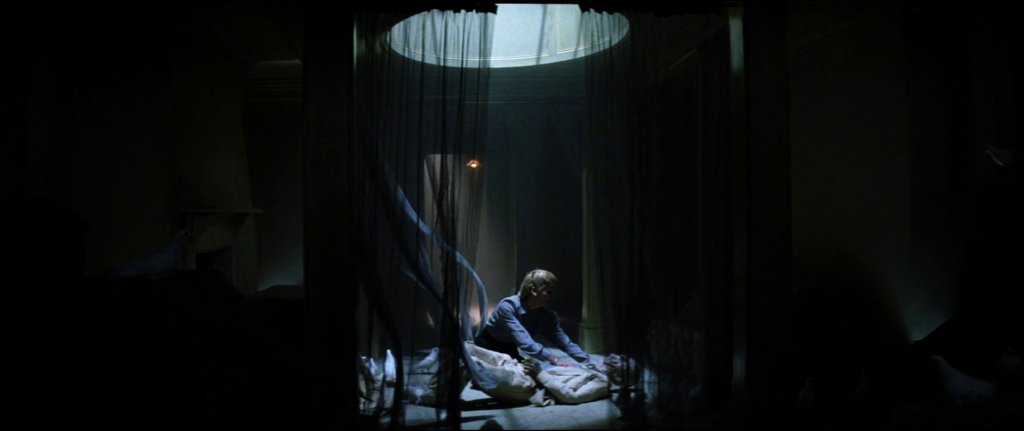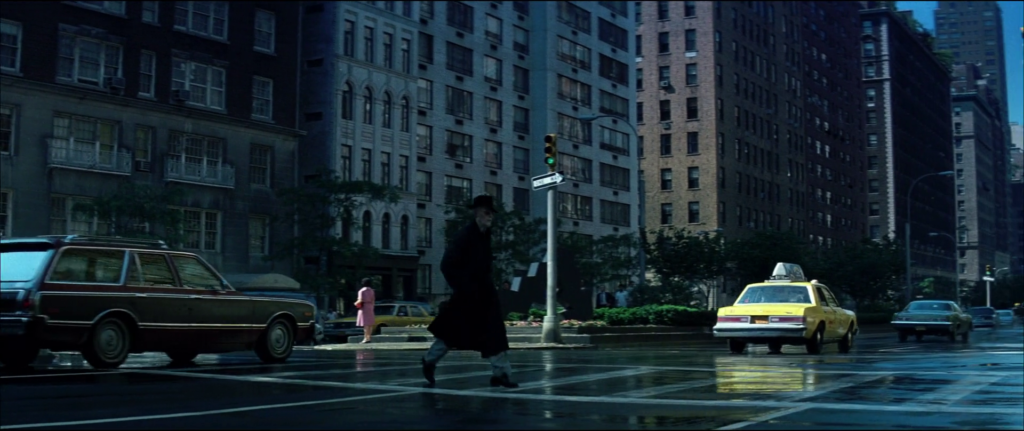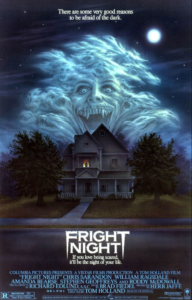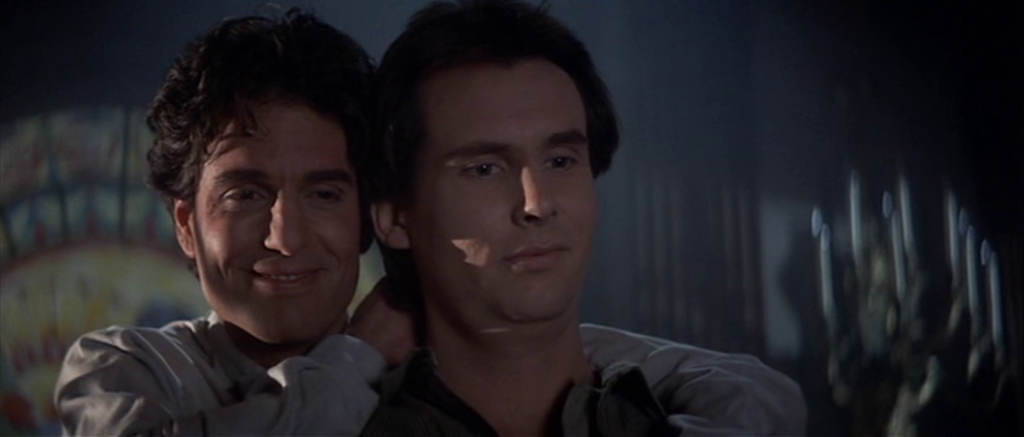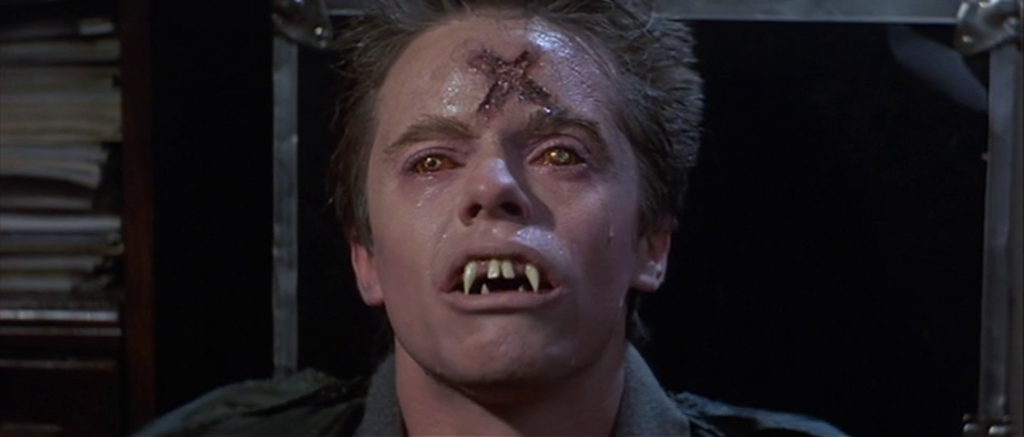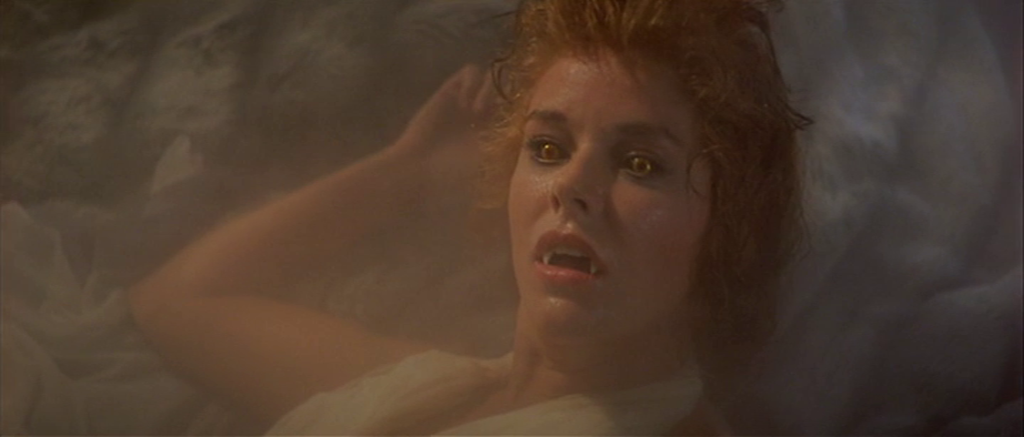|
Genres, Themes, Actors, and Directors:
- Amy Irving Films
- Brian De Palma Films
- Father and Child
- Horror Films
- John Cassavetes Films
- Kirk Douglas Films
- Supernatural Powers
Response to Peary’s Review:
Peary writes that this “stupid, complicated, unforgivably bloody Brian De Palma film, scripted by John Farris (from his novel)” has “too many characters, the acting is mostly wretched, the dialogue’s a joke, the picture has no ending… and — except for a couple of times when the background around Irving impressively changes to reveal what she’s thinking:

— the direction is terrible.” He argues that De Palma “uses slow motion too often, and has a tendency to circle his camera around tables where characters have conversations, calling attention to rather than disguising the banality of the chatter”:

— but “of course, the most objectionable thing about this film is the extreme violence (with emphasis on blood spattering in all directions).” While I’m in agreement with Peary that this film is a disappointment on just about every count — it can’t begin to compare with De Palma’s previous film about another girl with telekinetic powers — it seems to me that fans of this type of fare may not be so disturbed by the violence and bloodshed.
I’m most distressed by how much obvious care went into production values and special effects for a film that simply doesn’t lead anywhere interesting. The opening sequence on an Israeli beach is action-packed but insufficiently explained:

… simply positing numerous faceless “Arabs” as rampantly murderous killers. Next, 61-year-old Douglas — cast simply to bring a big name to the flick — gets to show off his strength and agility in a series of cat-and-mouse scenes (including a harrowing car chase):
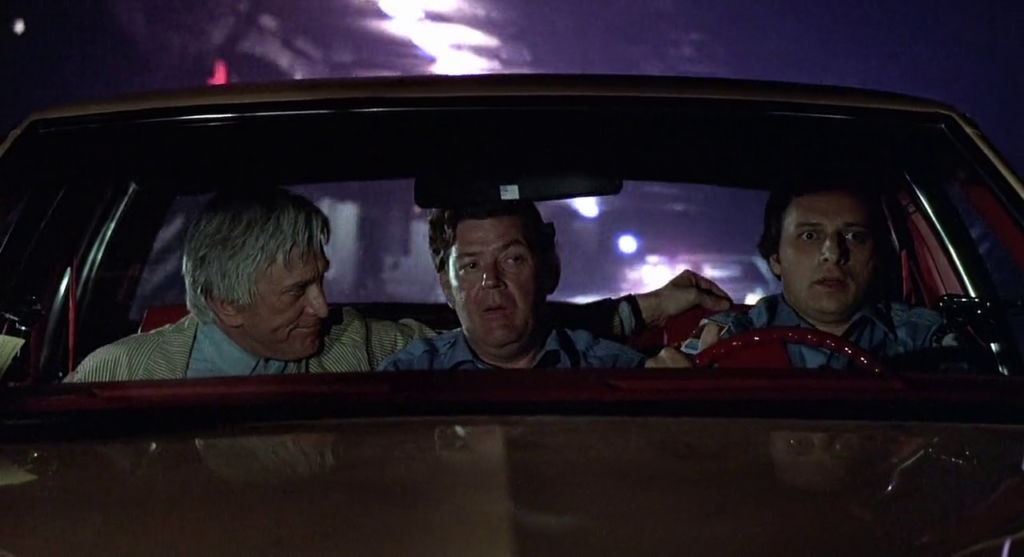
… that are simply silly and don’t add anything to the storyline. Irving is sympathetic and tries her best in a role that lets her down:
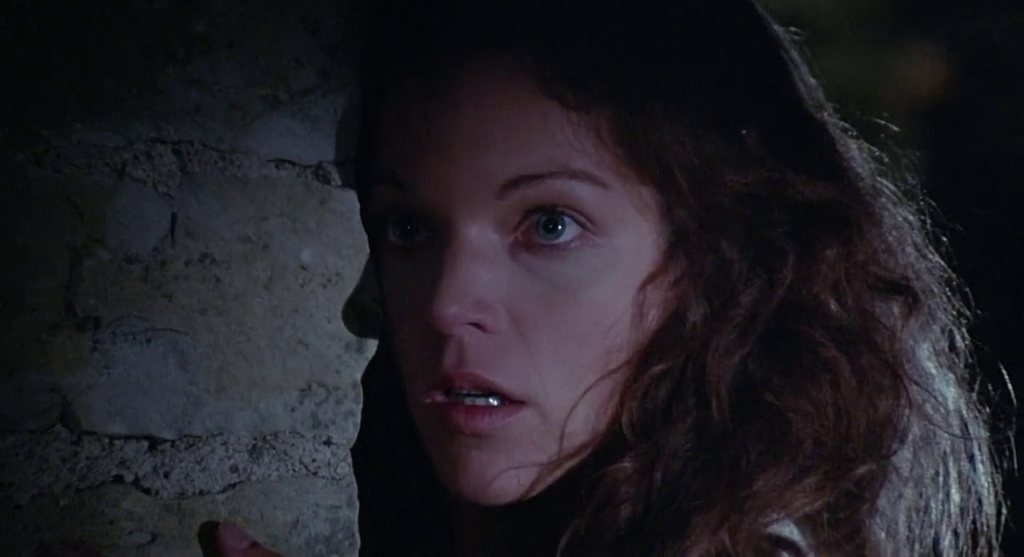
… but Stevens is an utterly unlikable “protagonist” who we don’t especially feel driven to see rescued from his plight. Snodgress and Lewis’s roles as supportive sex partners (Snodgress to Douglas, Lewis to Stevens):
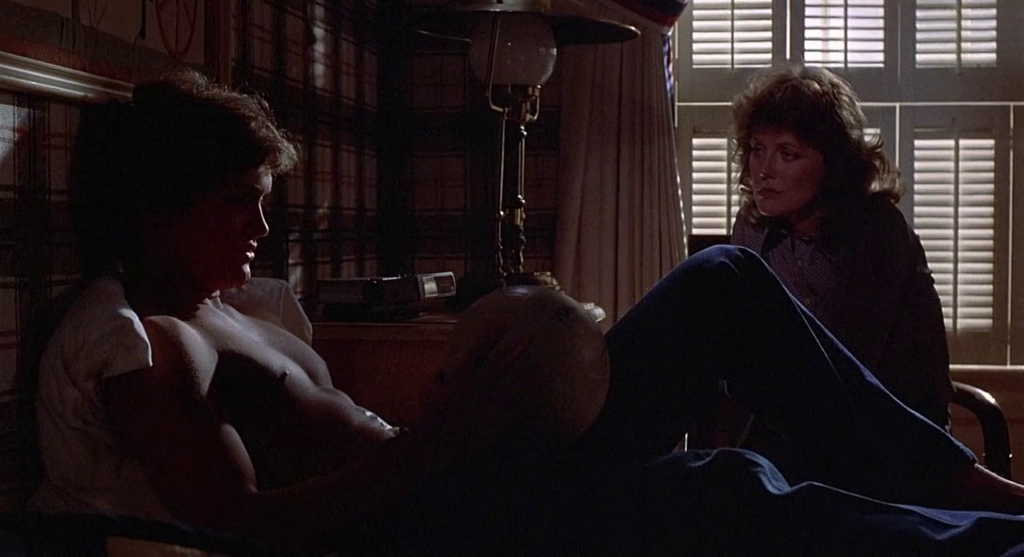
… are poorly written, and several other supporting characters simply disappear at a certain point. Definitely feel free to skip this one.
Redeeming Qualities and Moments:
- Amy Irving as Gillian
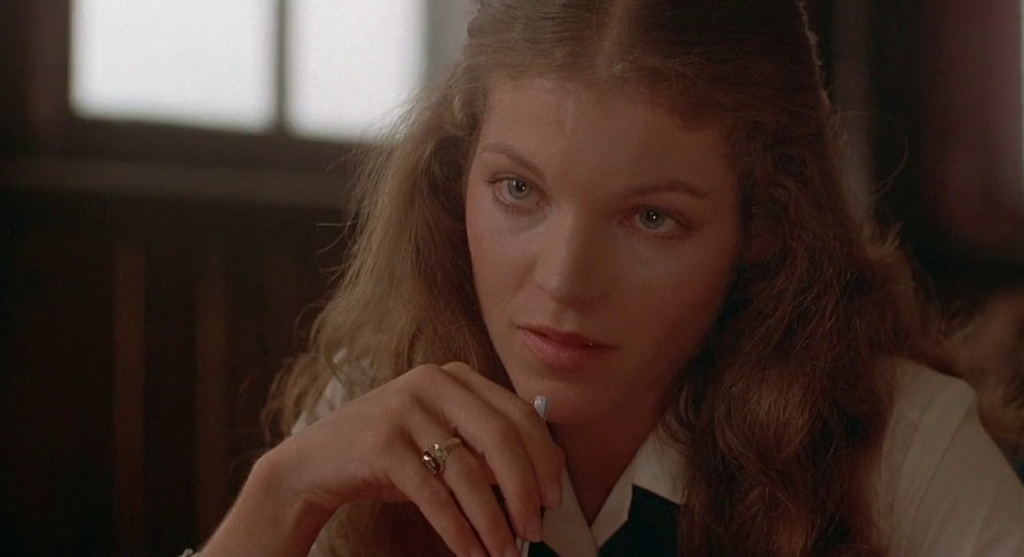
- Fine cinematography
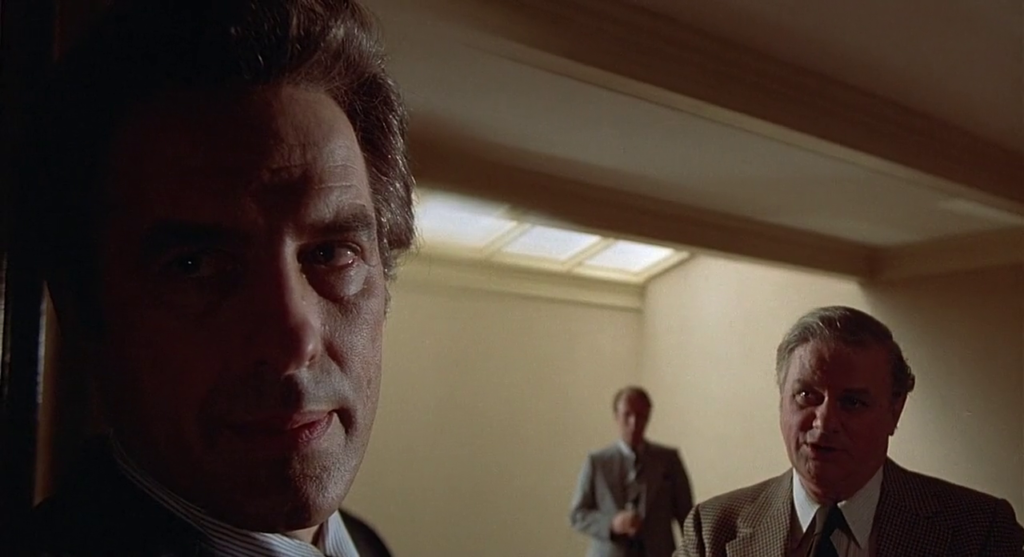
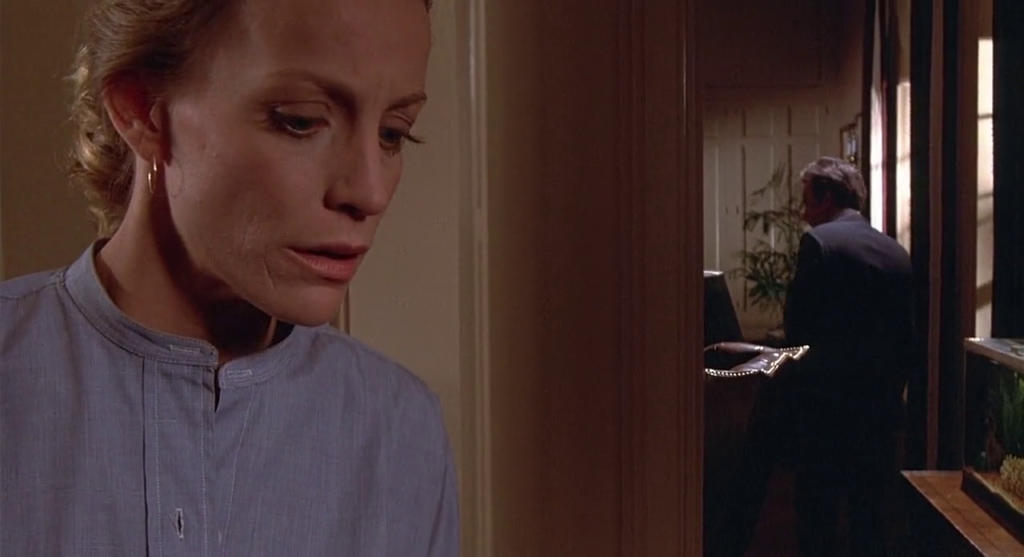
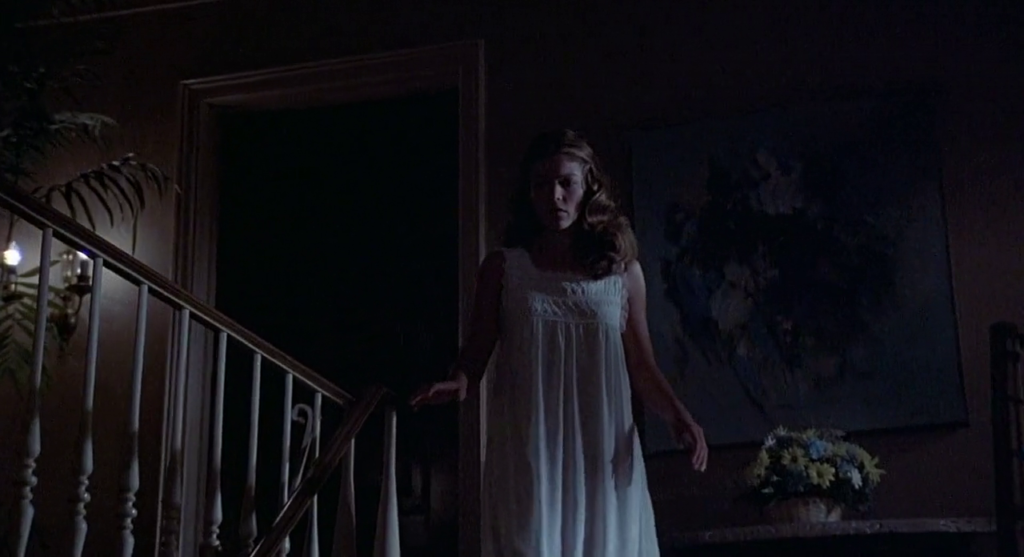
Must See?
No; you can skip this one.
Links:
|
